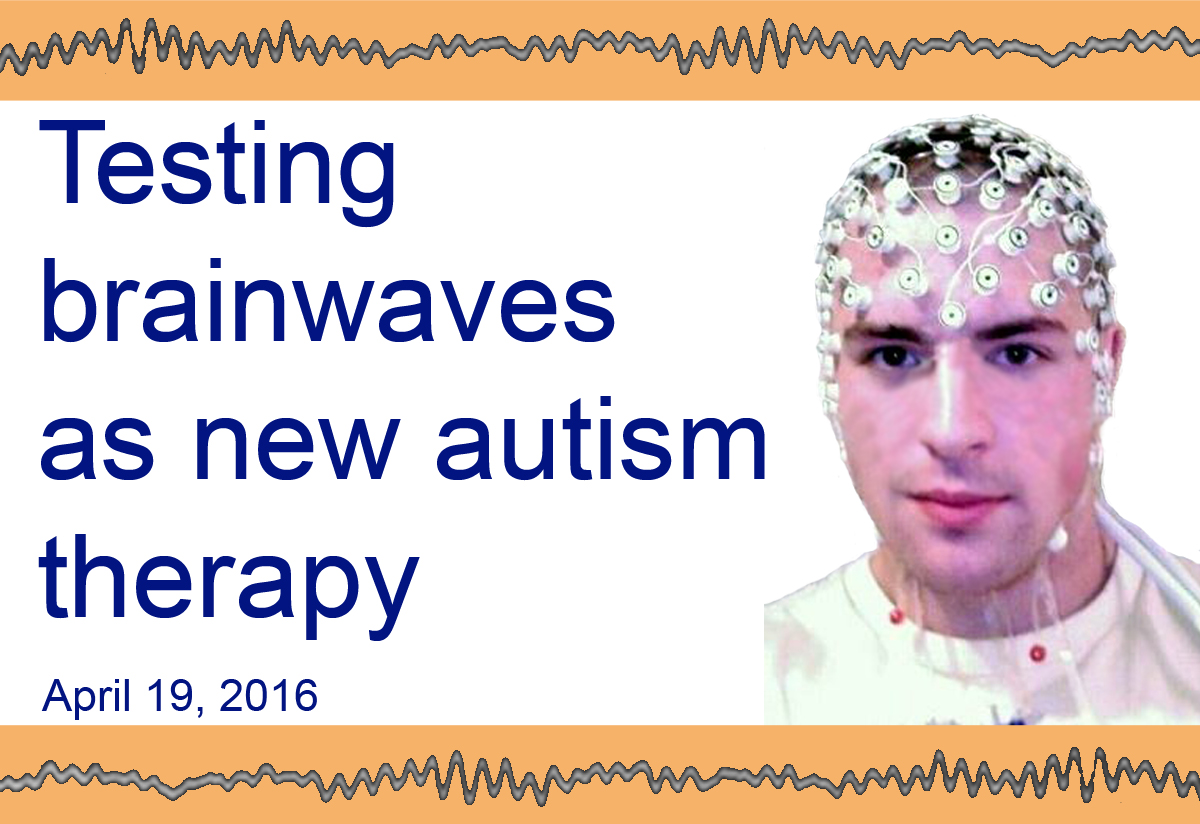Check out other stories from the Latest News
Non-invasive Brain Monitoring, a Potential ASD Therapy
By Chelsea E. Toledo, M.A. on April 19, 2016

Background: Among the treatments being considered for autism spectrum disorder (ASD), neurofeedback shows an indication of brain activity in real time, which helps people learn to regulate how their brains are functioning. The most common form of neurofeedback is analyzed using electroencephalography (EEG), which involves placement of electrodes on the scalp to measure changes in electrical activity within the brain. This process is frequently used to diagnose epilepsy.
What’s new: On January 14, 2016, the journal, Frontiers in Human Neuroscience published a study exploring EEG’s potential as a treatment for ASD, with a focus on the relationship between different frequency bands generated as a result of recording specific waveform oscillations in the brain’s activity. Researchers used the technology to monitor the brain activity of 18 participants with high-functioning ASD. After 18 weekly EEG sessions, they found a reduction in EEG characteristics associated with ASD in the brain’s prefrontal cortex – specifically those related to focused attention. They also saw improvement in lethargy and social withdrawal, as measured in an established questionnaire that was administered to parents at the beginning and end of the study.
Why it’s important: This study suggests that using neurofeedback from EEG analysis is a potential therapy for high-functioning children with ASD. Future research could hone in on specific techniques that compare relationships between frequency bands for the most effective method of treatment.
Help me understand :
| Source(s) : |
| Tweet |

